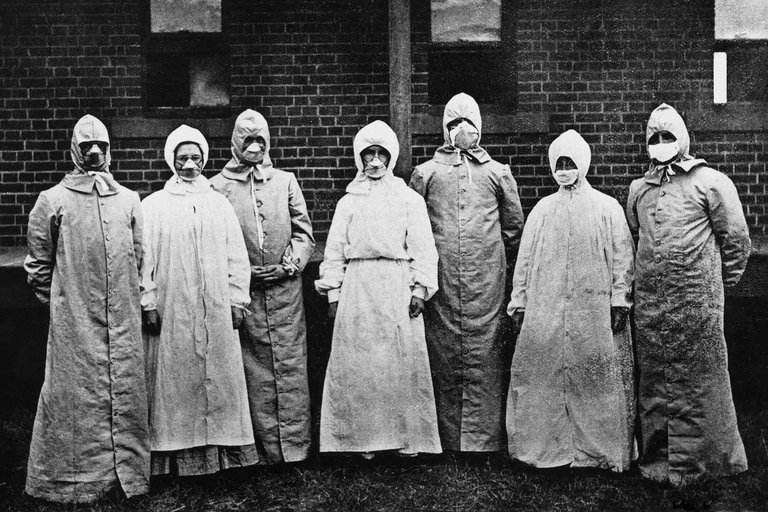Exploring Deadly Diseases: From Emerging Viruses to Endemic Threats
Diseases, ranging from easily treatable ailments to those with severe consequences or drug resistance, have plagued humanity for millennia. Despite significant strides in medical science, including the development of vaccines, drugs, and other treatments, there remain diseases considered deadly due to their profound impact on individuals' lives and overall health.
First, let me discuss a condition closely related to Covid-19, and that is Middle East Respiratory Syndrome (MERS) was a viral infection caused by novel coronavirus. It was first identified in the middle east, Saudi Arabia to be precised in 2012, hence the name Middle East Respiratory Syndrome (MERS). You guessed right, the virus mutated from camels to humans and people who got the virus came down with minor flu, but in extreme cases, they can have pneumonia and Acute Respiratory Distress Syndrome (ARDS) where the alveoli in the lungs are filled with fluid making it difficult to breath properly. This can lead to organs not receiving oxygen and lead to death. People with diseases such as Diabetes, cancer, chronic inflammatory disease or other form of diseases that could make them have compromised immune system had complications.
Severe Acute Respiratory Syndrome (SARS) is another acute respiratory syndrome like MERS which emerged in 2002 in China. It spread through human to human contact and from fluids in cough. It leads to complications such as difficulty breathing, fluid in the lungs, fever and respiratory failure.
Zika virus is one virus that is regarded as deadly not because of what it can do to the infected person alone but what it can do to the fetus when it affects a pregnant woman. Transmitted by Aedes mosquito, this virus can be transferred to unborn leading to defects after birth or stunted growth. Infants with Zika virus can develop microcephaly and this can lead to children having brain damage. The disease was first identified in Uganda in 1947 in rhesus monkeys and became a pandemic in 2015.
Ebola virus is that disease that got everyone paranoid as no one wanted to have the zombie-like experience where they bled from all the holes in their body. This disease is cause by four ebolaviruses within the genus Ebolavirus. The disease was first discovered in 1976 in Central Africa. There was the Ebola outbreak began in December 2013 in Guinea, and researcher say that it was transmitted from animals who would not experience any symptoms to humans. These animals were monkeys, apes, and antelopes. People who have this virus exhibit initial symptoms of fever, diarrhea, muscle pain, fatigue, abdominal pain, bruising and bleeding. The disease starts between 2 to 21 days after exposure. In severe cases, patients will bleed in every places that has large holes in the body.
Yellow fever is an acute viral hemorrhagic disease caused by Mosquito. This disease is predominant to subtropical areas in South America and Africa. Symptoms can include Jaundice, high fever, nausea, vomiting, severe liver disease and bleeding. The jaundicing of the skin is as a result of the breaking down of red blood cell into bilirubin. With yellow fever, the liver is affected and bilirubin breaking down is hindered. This disease can lead to bleeding of the gums, nose, eyes, bleeding in stool and even bleeding in the brain. Currently, there is no treatment for yellow fever but supportive care, rehydration. pain management, reducing fever, and acetaminophen can be given to patients.
While medical advancements have mitigated the impact of many diseases, deadly pathogens continue to pose significant threats to global health. Continued research, public health measures, and innovative interventions are essential in combating these diseases and safeguarding human well-being....
Reference
https://www.who.int/news-room/fact-sheets/detail/zika-virus
https://www.who.int/news-room/fact-sheets
https://www.nhs.uk/conditions/middle-east-respiratory-syndrome-mers/
https://www.cdc.gov/vhf/ebola/about.html
https://www.who.int/news-room/fact-sheets/detail/ebola-virus-disease
https://www.who.int/health-topics/yellow-fever#tab=tab_1
https://www.ncbi.nlm.nih.gov/books/NBK470425/
https://www.cdc.gov/yellowfever/index.html


Thanks for your contribution to the STEMsocial community. Feel free to join us on discord to get to know the rest of us!
Please consider delegating to the @stemsocial account (85% of the curation rewards are returned).
Thanks for including @stemsocial as a beneficiary, which gives you stronger support.